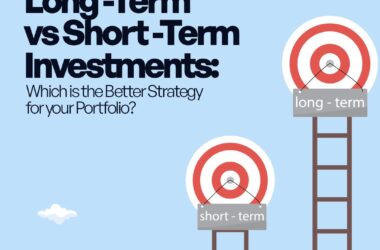If your investments aren’t doing well, the next step is usually to revaluate your strategy. Think of it like going to the doctor – you need to check in and make sure everything is on track. Sometimes, you need to make some changes, like rebalancing your portfolio. This means adjusting the mix of investments so that it matches your goals and risk tolerance. It’s a way to keep your portfolio healthy and on track, so don’t ignore it!
Basically, different assets in your portfolio earn different returns, and rebalancing helps to make sure they’re weighted in a way that matches your investment goals.
In this blog post, you will understand more about portfolio rebalancing and the different strategies that you can use to achieve results.

Understanding Portfolio rebalancing
Portfolio rebalancing is a process of adjusting the allocation of assets in a portfolio to maintain the desired asset mix. As the values of assets change, inevitably the original asset mix will change due to the differing returns of the asset classes. This will change the risk profile of your portfolio.
Rebalancing a portfolio can be done by buying or selling assets to bring your portfolio back in line with the original target weights.
For example, let’s say you have a $100,000 portfolio, and you initially decided to allocate 60% to stocks and 40% to bonds. After a year, your portfolio has changed, and you now have 65% in stocks and 35% in bonds. To rebalance, you would sell some of your stocks and use the proceeds to buy more bonds until your portfolio is once again at 60/40. This ensures that your risk level and investment strategy are still in line with your goals.
Why You Need to Rebalance Your Portfolio
Rebalancing your portfolio is a crucial aspect of maintaining an efficient investment strategy. Here’s why it’s important to rebalance your portfolio:
1. Risk Management
Over time, the performance of different assets in your portfolio can cause their weights to drift from your original allocation. For example, if one asset class performs exceptionally well, it may become a disproportionately large part of your portfolio, exposing you to higher risk. Rebalancing helps bring your portfolio back to its intended risk profile by trimming overperforming assets and adding to underperforming ones.
2. Maintaining Diversification
Diversification is a key principle of long-term success in investing. It helps spread risk across various assets, reducing the impact of any single investment’s poor performance on your overall portfolio. Without rebalancing, your portfolio’s diversification could diminish as some assets outgrow others, leaving you exposed to more concentrated risks.
3. Staying Aligned with Goals
Your investment goals and risk tolerance may evolve over time. Rebalancing allows you to realign your portfolio with these changing objectives. For example, if your risk tolerance decreases as you near retirement, you may want to rebalance your portfolio to reduce exposure to volatile assets and preserve capital.
4. Retain Gains
Rebalancing allows you to sell investments that have appreciated significantly, locking in gains and reducing the risk of potential reversals. This disciplined approach helps you avoid the temptation to hold onto winning positions for too long, which can expose you to heightened risk if the market experiences a downturn.
Improving Long-Term Returns
While rebalancing may involve selling assets that have performed well in the short term, studies have shown that it can lead to better long-term returns by forcing you to buy undervalued assets and sell overvalued ones. This contrarian approach is a fundamental aspect of value investing and can enhance your portfolio’s overall performance over time.
Different Portfolio Rebalancing Strategies
1. Calendar-based Rebalancing
Calendar rebalancing is the simplest type of rebalancing. It involves reviewing your investments at specific time intervals, such as monthly or quarterly, and adjusting your portfolio to match your original allocation.
This is the easiest way to rebalance, but it can have some drawbacks. Too frequent rebalancing can be expensive, and less frequent rebalancing may not be enough to keep your portfolio on track. The rebalancing schedule will vary depending on your circumstances.
2. Percentage-of-Portfolio Rebalancing
In this method, you rebalance your portfolio whenever an asset’s weight drifts by a certain percentage from its target allocation. For example, if your target allocation for stocks is 60%, you might rebalance whenever stocks make up more than 65% or less than 55% of your portfolio.
This approach ensures that you focus on rebalancing the assets that have the greatest impact on your overall portfolio allocation.
3. Constant Proportion Portfolio Insurance (CPPI) Rebalancing
This is a dynamic asset allocation strategy that aims to provide downside protection while allowing for potential upside participation in the market. It involves maintaining a predetermined allocation between a risky asset (like stocks) and a risk-free asset (like cash or bonds).
CPPI relies on a cushion level, multiplier, and periodic rebalancing to adjust the portfolio’s allocation. While it offers downside protection during market downturns, CPPI also entails risks and requires careful monitoring and adjustment. Investors should assess their risk tolerance and investment objectives before implementing CPPI and seek professional financial advice for suitability.
FAQ
How Often Should I Rebalance My Investment Portfolio?
Although rebalancing your portfolio is a personal matter, however, it is recommended that a portfolio should be rebalanced at least once a year.

Conclusion
Building a portfolio is just the first step – maintaining and monitoring it over time is just as important. Rebalancing your portfolio is like taking your car in for a tune-up – it helps to keep everything running smoothly. When you rebalance, you make adjustments to your investments to keep the risk level in line with your goals.
To start an easy stock investment journey, download the trove app today!







